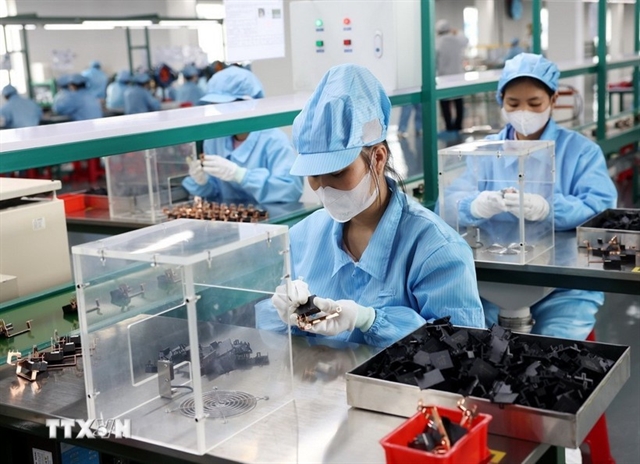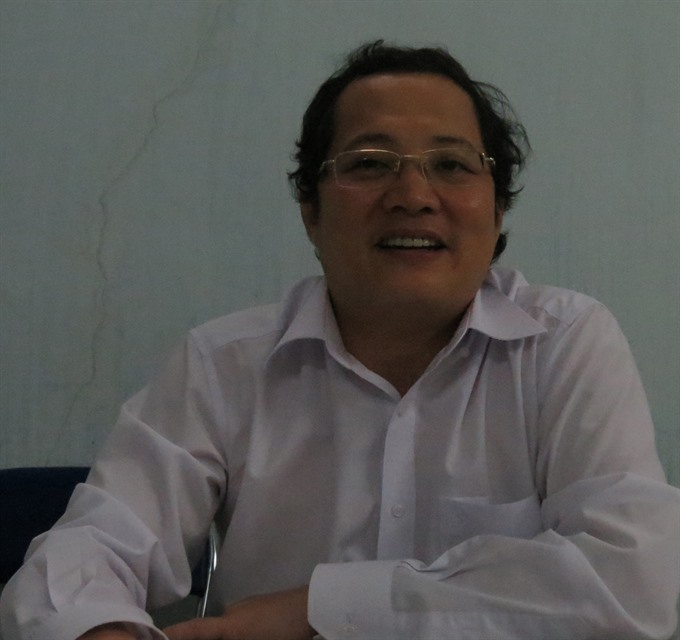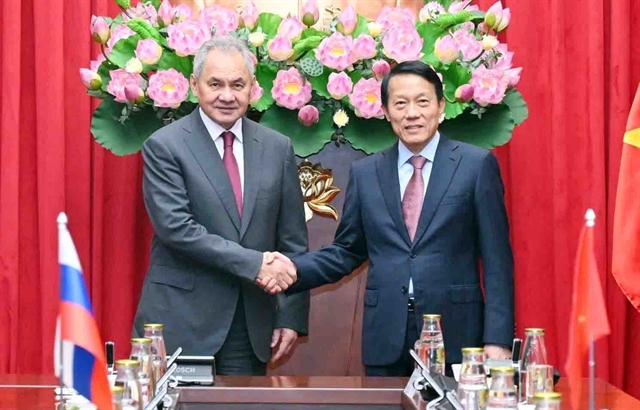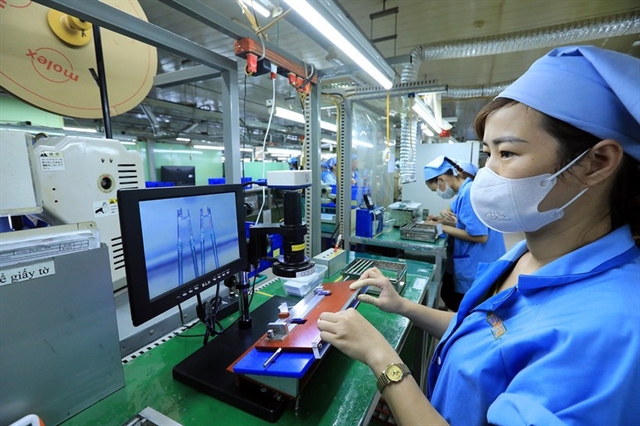 Inner Sanctum
Inner Sanctum

" />Dr Nguyễn Minh Quân has brought advanced technologies normally used at city- or central-level hospitals to an outlying district, Thủ Đức, in HCM City. He spoke to Gia Lộc about his work.
 |
| Dr Nguyễn Minh Quân, director of the Thủ Đức District Hospital in HCM City |
Dr Nguyễn Minh Quân has brought advanced technologies normally used at city, or central-level hospitals, to an outlying district, Thủ Đức, in HCM City. He has also initiated measures to improve services at ward-level health centres and at other district-level hospitals, helping to increase patients’ trust and ease overcrowding at city-level hospitals. He was one of 113 people recently honoured by the municipal administration for his contributions to the City. He spoke to Gia Lộc about his work.
Inner Sanctum: Could you tell us how you improved services at some of the city’s health facilities?
The way to serve patients best is to consider them as the centre of healthcare service. With this mindset, I have developed initiatives to improve services. The initiatives have included the use of electronic medical records and a satellite emergency station with global positioning systems (GPS) at the Thủ Đức District Hospital.
The hospital was the first in the country to use electronic medical records and open a general health clinic at ward-based health centres, which lack doctors and offer few examinations or treatment services.
Last year, the city’s Department of Health honoured the hospital’s initiatives. The city’s administration has also commended the Thủ Đức Hospital for excellent achievements in improving quality, which has resulted in higher patient satisfaction over the last four years.
The hospital has been honoured along with city- and central-level hospitals, including the Từ Dũ Hospital, the Paediatrics Hospital 1, the Chợ Rẫy Hospital, the Bình Dân Hospital and the Hospital for Tropical Diseases.
Inner Sanctum: Why did you set up a general health clinic at health centres in district wards?
The hospital has set up three general health clinics at health centres in district wards to improve services and help residents in outlying areas. With these centres, patients don’t have to go to the inner city for basic services.
Now is the time to build a general health clinic in wards and communes. But it was not as difficult as I originally thought. The clinics help increase the number of doctors at ward- or commune-based health centres, many of which have only one doctor. The health clinics are equipped with advanced medical equipment for diagnosis and treatment.
Hospitals with qualified doctors and advanced techniques should invest in general health clinics at ward- or commune-based health centres to increase patient trust. Doctors also can rotate by taking turns at these clinics.
Thanks to the reputation of the Thủ Đức Hospital’s doctors, the clinic at the centre has attracted many patients. For instance, the general health clinic at the health centre in Thủ Đức District’s Nhị Linh Xuân Ward now treats 500 patients every day.
Doctors at the centre can work for the clinic beyond just providing preventive health services, which the city’s health authority has assigned. While working with the clinic’s doctors, they can improve their skills and professional capacity. Moreover, their income can increase as the salary of medical workers at centres in wards and communes is low.
Besides general health clinics, doctors at the health centre can develop a model of family medicine devoted to comprehensive health care for people of all ages in the locality.
By the year end, the hospital will expand the number of general health clinics to the remaining nine ward-level health centres in the district. I believe the services in wards and communes will attract a large number of patients in the next three years.
The clinics that attract many patients will help reduce patient overcrowding at the Thủ Đức District Hospital. This overloading affects quality and can damage the brand name that took years to build. Hospital-acquired infections can also more easily occur because of overcrowding.
Inner Sanctum: Why do you want to help other district-level hospitals, especially those in the city’s outlying areas?
I experienced a shortage of medical equipment and difficulty in attracting patients in the beginning. So I am now ready to provide assistance and share experiences with other district-level hospitals that need my help.
That is a social responsibility of the hospital. I send the hospital’s doctors to other hospitals, such as general hospitals in districts 11, Củ Chi, and Bình Chánh, for training. As district-level hospitals develop, local residents will benefit from primary health care. Late detection and treatment, which increases the rate of mortality, will also no longer occur in the country.
Inner Sanctum: What steps have you taken at the Thủ Đức District Hospital, which had only 100 to 200 patients in the beginning?
In 2007, the Thủ Đức Hospital opened and I was chosen to become its director. At that time, the hospital had only 17 doctors and one X-ray machine, a portable ultrasound machine, and simple testing machines.
I met with enterprises in the health sector, including those in medical equipment, to seek co-operation. I also visited city-level hospitals to invite qualified doctors who were working there, but were not paid a salary. I ensured that they would have a good working environment to prove their ability and have a stable income. I used my money to rent houses with all mod cons for them to live near the hospital. Now, the hospital has more than 500 medical workers.
The next thing which I did was try to attract more patients. My staff and I visited all industrial parks and export processing zones in the district to hand out leaflets to workers there every afternoon for many months after their shifts ended. I also took advantage of the time when I visited companies to talk about health issues and introduce the hospital. And I took part in meetings of residents to talk about the hospital.
Many people gradually got to know the hospital. When they come for examination and treatment many times, they find that doctors and medical equipment are good. So they return to the hospital for treatment.
The number of patients after one year of operation increased to nearly 400 per day, and now we have 5,000 per day. The number of insured patients who designate the hospital to be the first health facility on their health insurance cards also rose from 5,000 in the beginning to 300,000 now.
Inner Sanctum: Which advanced technologies are your hospital’s doctors using?
District-level hospitals find it difficult to keep qualified doctors. Applying high-tech and advanced technology helps to create a brand name. When the hospital has a good reputation, its qualified doctors do not want to leave to work for other hospitals. This creates an environment that helps doctors develop their professional skills.
Hospitals have to create a good working environment. This means that managers have to take thorough care of their staff’s work and daily life. They allow the staff to prove their capacity, and the staff works in solidarity.
Applying advanced techniques also helps change the mindset of society toward district hospitals. I have proven that the mindset is wrong. People can benefit from comprehensive healthcare services at a district hospital in their locality.
Our hospital has applied most high-tech procedures that the city- or central-level hospitals perform, such as cardiovascular intervention and surgery on brain tumours. VNS




